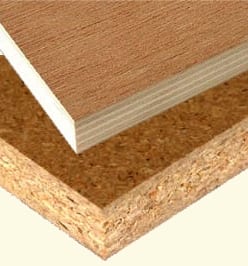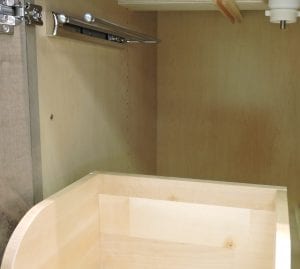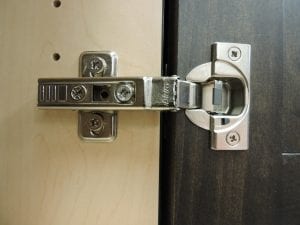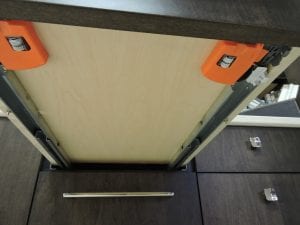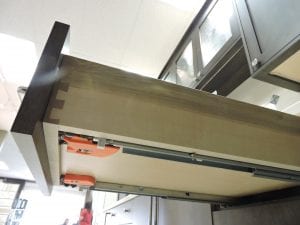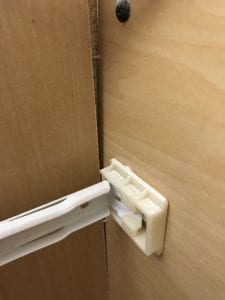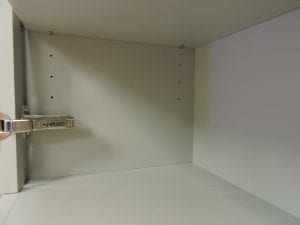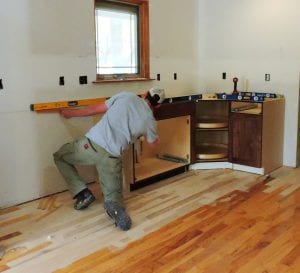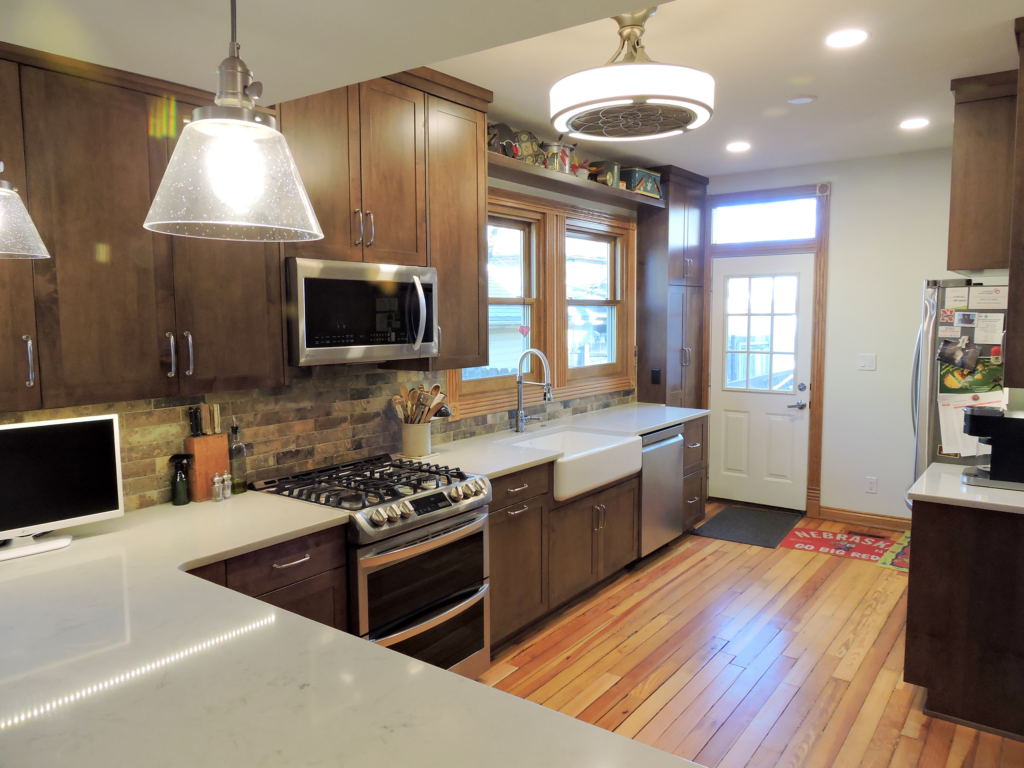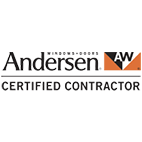All Cabinets Are Not Created Equal
Material
Probably the most important part of picking cabinetry is choosing the right material. Cabinetry can be built using several materials – most commonly particleboard, medium density fiberboard (MDF) or plywood. Particleboard is a less expensive material, but weak in compression. Shelves and drawer bottoms are prone to sagging. MDF is stronger than particleboard and less expensive than plywood. It provides a smooth surface for paint and is becoming more popular for cabinet doors or panels for that reason, especially if wood grain is not desired. Plywood holds screws and other fasteners better than particleboard and can be stained as well as painted. It is made from two or more layers of wood glued together with the direction of the grain alternating. The number of layers and type of wood used will determine the strength of the board. It is rigid and is recommended as the premium option for cabinets. All our cabinet lines provide quality construction and materials. Visit our showroom to see your different options.
Back Panels
One method of construction to consider are back panels. The strongest cabinet is constructed with full-height back panels made of heavy plywood (3/8” or more). Other methods use thin panels, rails, or picture frame construction. A full-height panel allows the cabinet to be attached to studs at any point on the back. Also, cutting a hole for plumbing or wiring won’t weaken the integrity of the cabinet. You may not want to see the wall when you open a cabinet door. Visit the WCI Design Center to see the many quality cabinets you can choose from.
Hinges
Hardware is an important component to your cabinet, you can’t open a door or drawer without it. Poor quality hinges can cause stiff, loose, or uneven doors. They might even prevent the door from closing completely. A hinge should be adjustable for when cabinet doors expand and contract. A soft-close hinge is adjustable and will eliminate slamming noise and wear. You can see these hinges in action by visiting the WCI Design Center.
Glides
Besides hinges, drawer glides should also be considered. A high-quality glide will give you years of smooth and silent movement. You should also be able to open your drawer fully, rather than having to reach your hand into the drawer to access the things in back. Side-mount glides reduce the storage capacity of your drawer. Some will use plastic components which will deteriorate or wear. Ideally you should have two bottom-mounted steel soft-close glides. Come to the WCI Design Center to see for yourself.
Drawer Construction
Good drawer construction is easy to see. If you’ve had drawer fronts that fall off or drawers that bend or bow, then you’ve experienced poor construction. Look for dovetailed construction, or interlocking “teeth”, at the corners of the drawer when shopping for cabinets. They should be made of hardwood and plywood, not particleboard. The bottom should be “fully captured” or fit into grooves on the drawer sides, rather than stapled or glued to the bottom. Visit the WCI Design Center to see what quality drawers look like.
Assembly
Unless you are an experienced wood worker, you probably don’t want a cabinet you put together yourself. You want your cabinet to last longer than the bookshelf you put together out of a box. By purchasing fully assembled cabinets, you know they are put together correctly, and they will be stronger and more durable. When working with WCI you can be assured we have chosen suppliers and manufacturers who will provide products that will last for years to come.
Level Installment
Rarely are walls and floors perfectly level and plumb, especially in an older home. Purchasing cabinets from a box store gives you little to no control over how they will fit into the space. Being able to make modifications or adjustments for those issues can make a difference on how your room turns out. You have the option of using a fully custom or a semi-custom cabinet to give you flexibility and still fit into your budget. Working with a WCI designer can help you get cabinets that fit and function well in your home.
Warranty
Is there a warranty? When shopping for cabinetry for your home, look for a manufacturer who stands behind their product. If there is no warranty, you have no recourse if the cabinet fails in the future. When working with a contractor or installer, check their reputation. Do they have a long-standing relationship with their cabinet supplier? Can you depend on them being there for you in the future if something goes wrong?
Sidebar
Let’s Talk
Request a no-hassle consultation with our team today.


